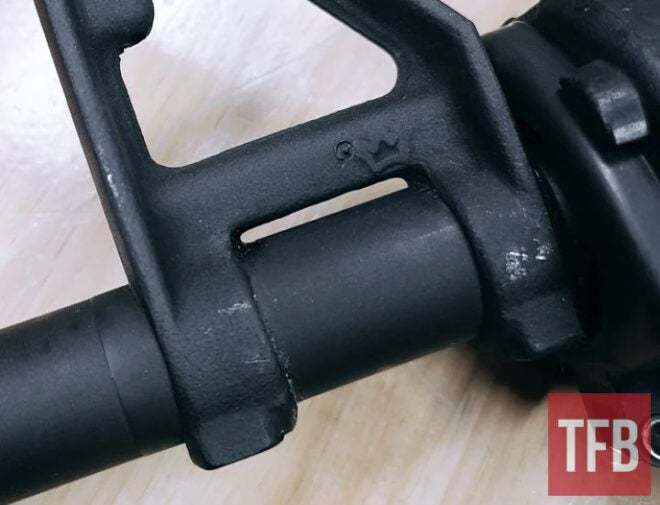The AR-15 is undoubtedly the most popular gun in America. Virtually all gun owners have at least used, if not built, multiple of them. Every once in a while, there is one that is a stumper. This is the story of the strangest front sight base I have ever dealt with.
More AR-15 Articles @ TFB:
- HOT GAT or FUDD CRAP? Collectors Grade or General Dismay?
- [NRAAM 2023] An FN AR-15 Under $1K?
- Hop vs. James Cheap AR-15 Budget Build-Off PART 2
- [SHOT 2023] The Carry Handle Corner: Retro And Clone AR-15 Compendium
- Build a Designated Marksman Rifle AR-15 on a Budget!
Backstory
I got into shooting CMP Highpower competition last year. My starter rifle was a Bushmaster “DCM” parts kit designed for that type of shooting match. However, back when that rifle was made, iron sights were the only permissible sighting system. The rules have changed since then and magnified optics are now the norm.
This left me with a few options. I could buy a completely new flat-top upper, keep shooting irons, or convert my existing upper to a flat-top. Option 3 seemed like the obvious answer. But on closer inspection, I found that there were no visible means of attachment holding the front sight base on the barrel. There were no taper pins, nor were there any set screws. The FSB was solidly affixed somehow, but how exactly was unclear.
I posted some pictures of this oddity on my Instagram account to see if anyone had experience with such a configuration. No one had first-hand knowledge but there were many suggestions. Some were right out of the school of Dremel gunsmithing, and others suggested large hammers. The best guess among several smart people was that some sort of brazing or soldering held the front sight in place.
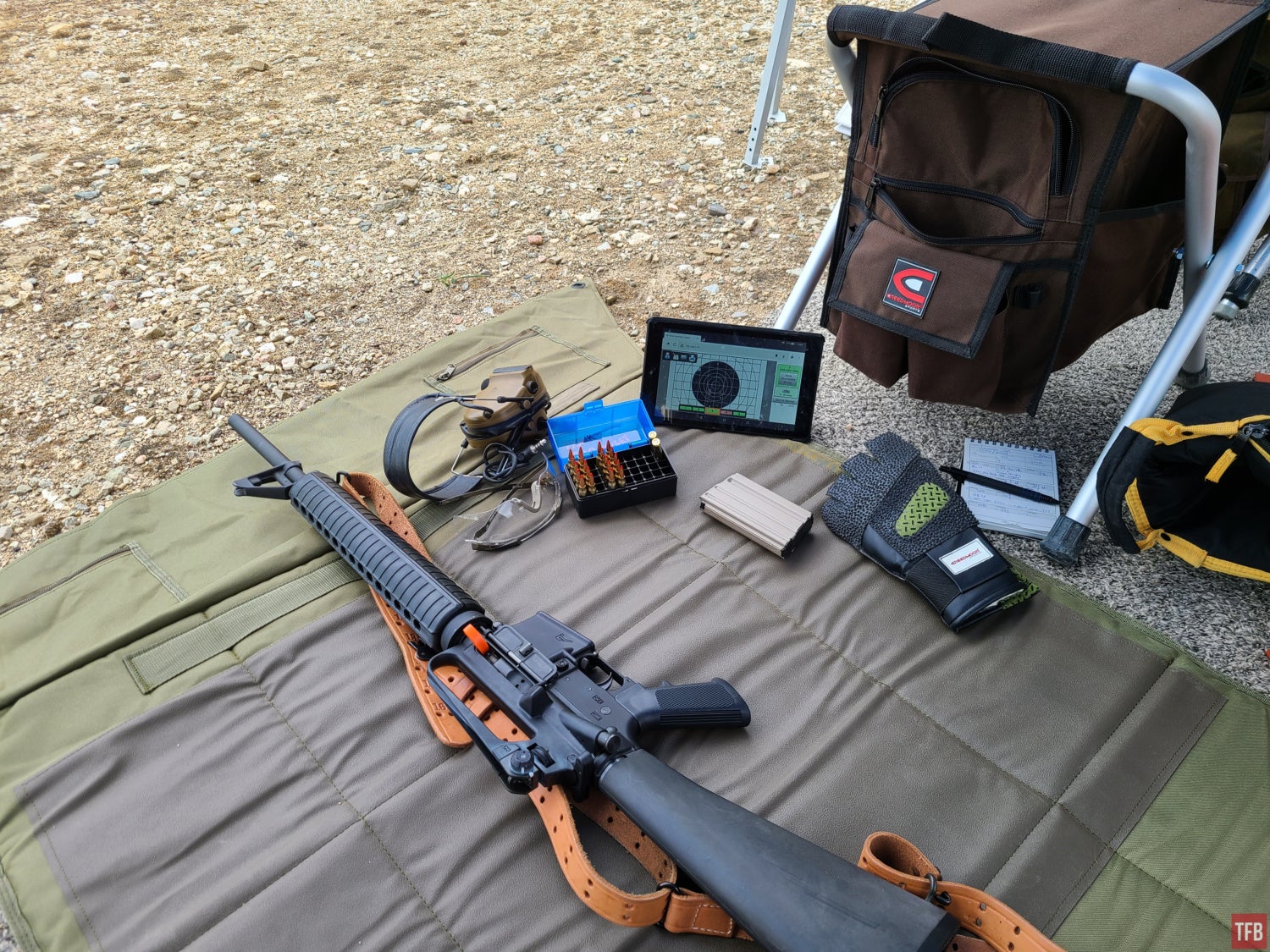
The Bushmaster DCM upper in its original A2 configuration on the firing line.
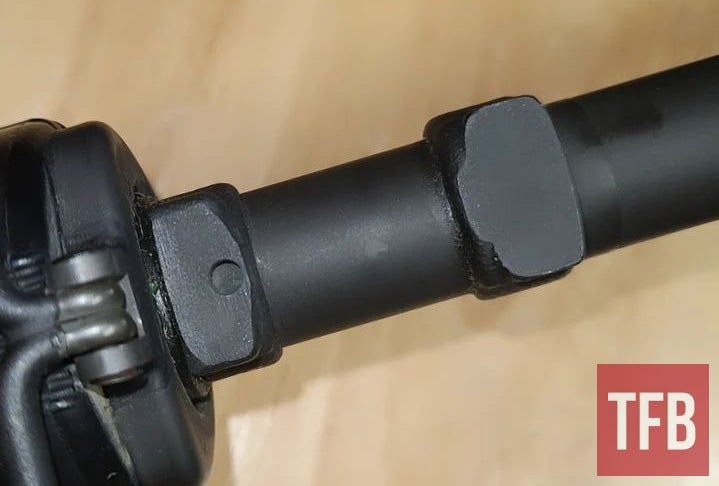
No, there are no set screws or pins in the bottom of the FSB, either.
Removing The FSB
Like any good surgeon, I started with the least invasive method. I soaked the front sight assembly in penetrating oil, then used a large hammer and punch to try and dislodge the FSB. Unsurprisingly, that did not work.
The next step was to heat it up. I removed the handguards, sling, and anything else that seemed like it would react poorly to flames, and I put the upper into a vise with the barrel pointed down so that it would be solidly supported. I warmed the FSB gently with a propane torch, then tried again with a punch and hammer. No luck.
So then it was time to try lots of heat. I again used the propane torch and heated it to a point where I was starting to worry about the barrel. But then a silver liquid started to flow out of the joint between the FSB barrel rings and the barrel. Once it started flowing from both the front and rear ring, I hurried and struck it with a hammer. With only a couple of hits, it came right off! I was careful to let the FSB and gas tube just fall to the floor because it was extremely hot.
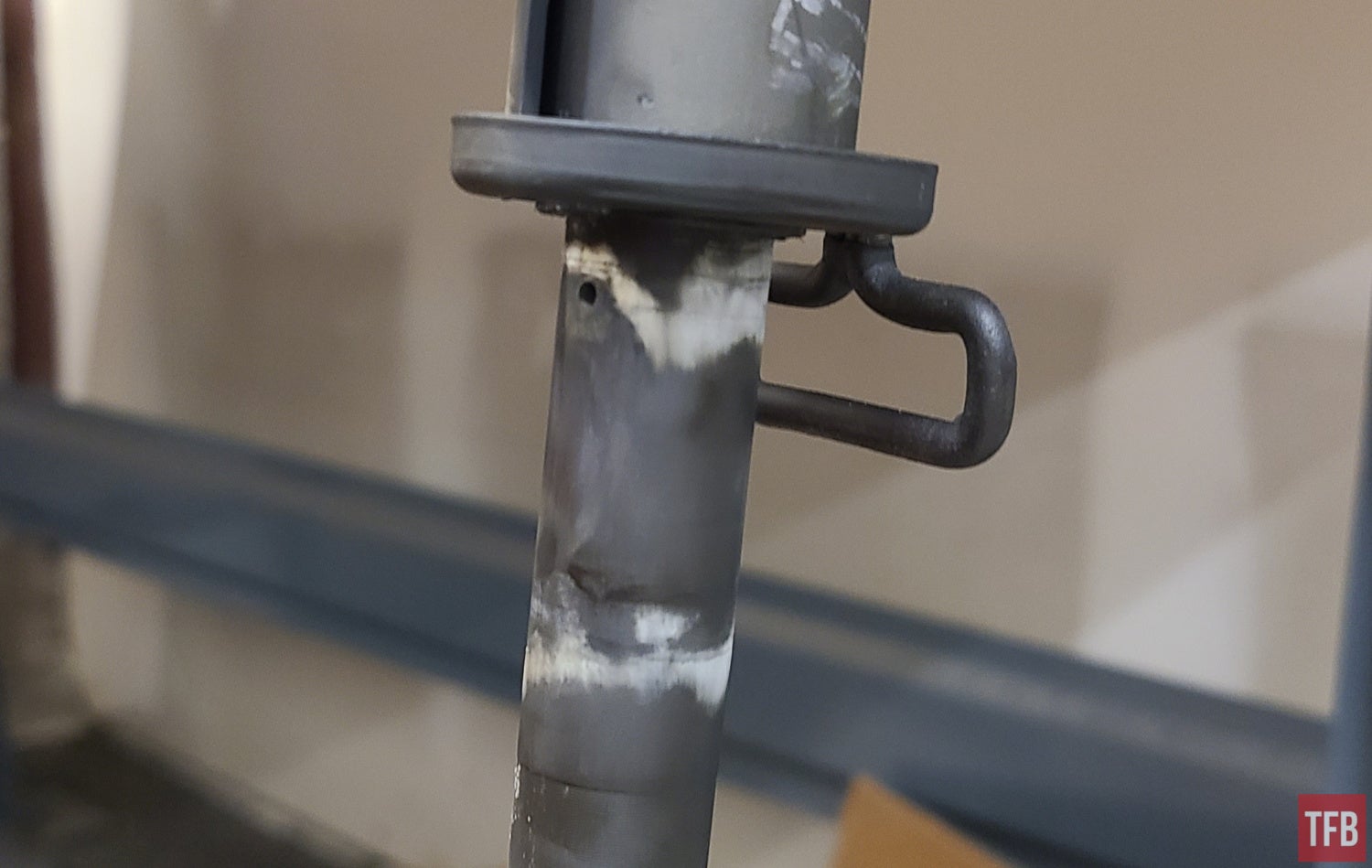
The brazing filler material flowed out from under the front sight base.
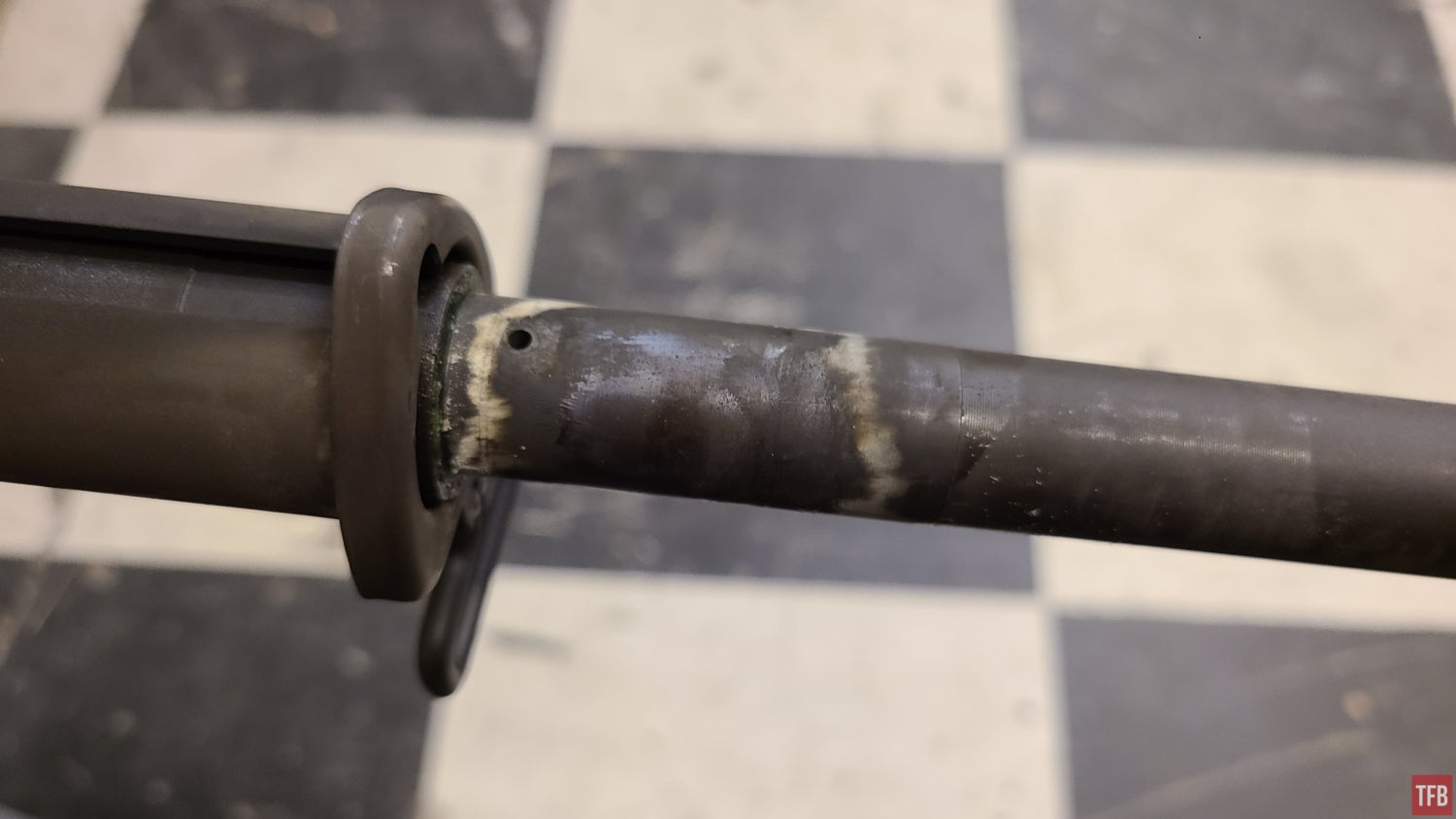
Both the front and rear rings of the FSB had brazing filler material inside them.
Aftermath
Once the front sight was removed, the next step was removing the handguard. This is a National Match-type, which uses an inner steel sleeve to support plastic handguards. This provides a free-floated front end while looking like a classic M-16A2 handguard. The barrel nut required some heating and somewhere around 120 foot pounds to break loose, but it did come off.
Reassembling the upper was much easier than getting it apart. I used an Aero Precision flat top upper, the original handguard, gas tube, bolt carrier group, and charging handle, and a Yankee Hill clamp-on folding front sight base. CMP service rifle rules limit competitors to 4.5-power scopes, so I mounted an old Vortex PST 1-4×24 scope.
My Wikipedia-grade research into brazing vs. soldering suggests that solder generally flows at a melting point below 840 degrees Fahrenheit, and brazing filler melts at temperatures above 840 degrees. I did not measure the temperature but would guess it was into brazing territory or at the upper end of soldering temperatures. Propane torches burn at about 2,000 degrees and it took a while before the filler turned liquid. The FSB was not yet glowing red but it was headed that way. If you ever undertake this project just know that it will require quite a bit of heat to dislodge the front sight.
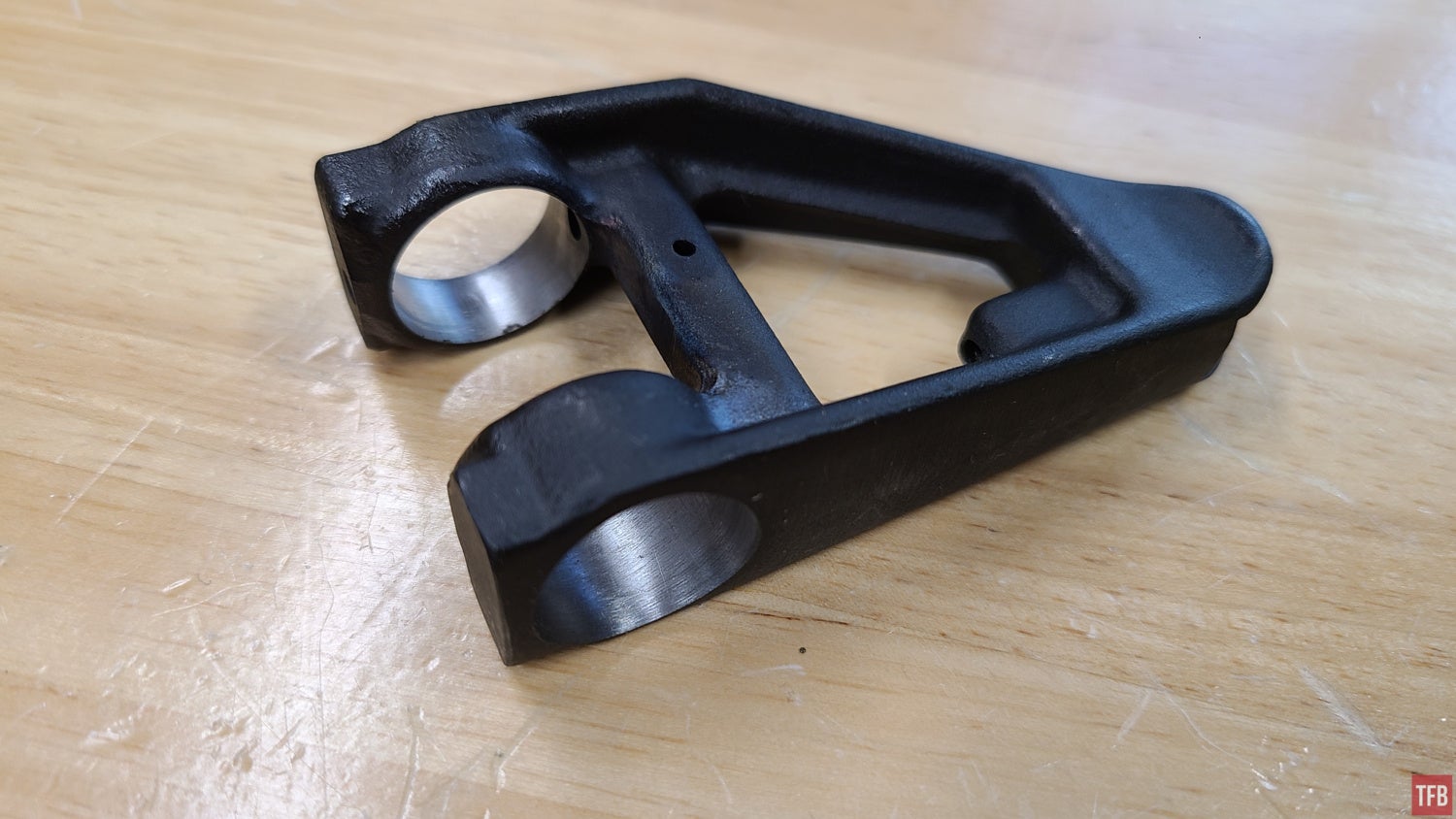
The FSB got quite hot, and some discoloration is visible along the strut between the rings.
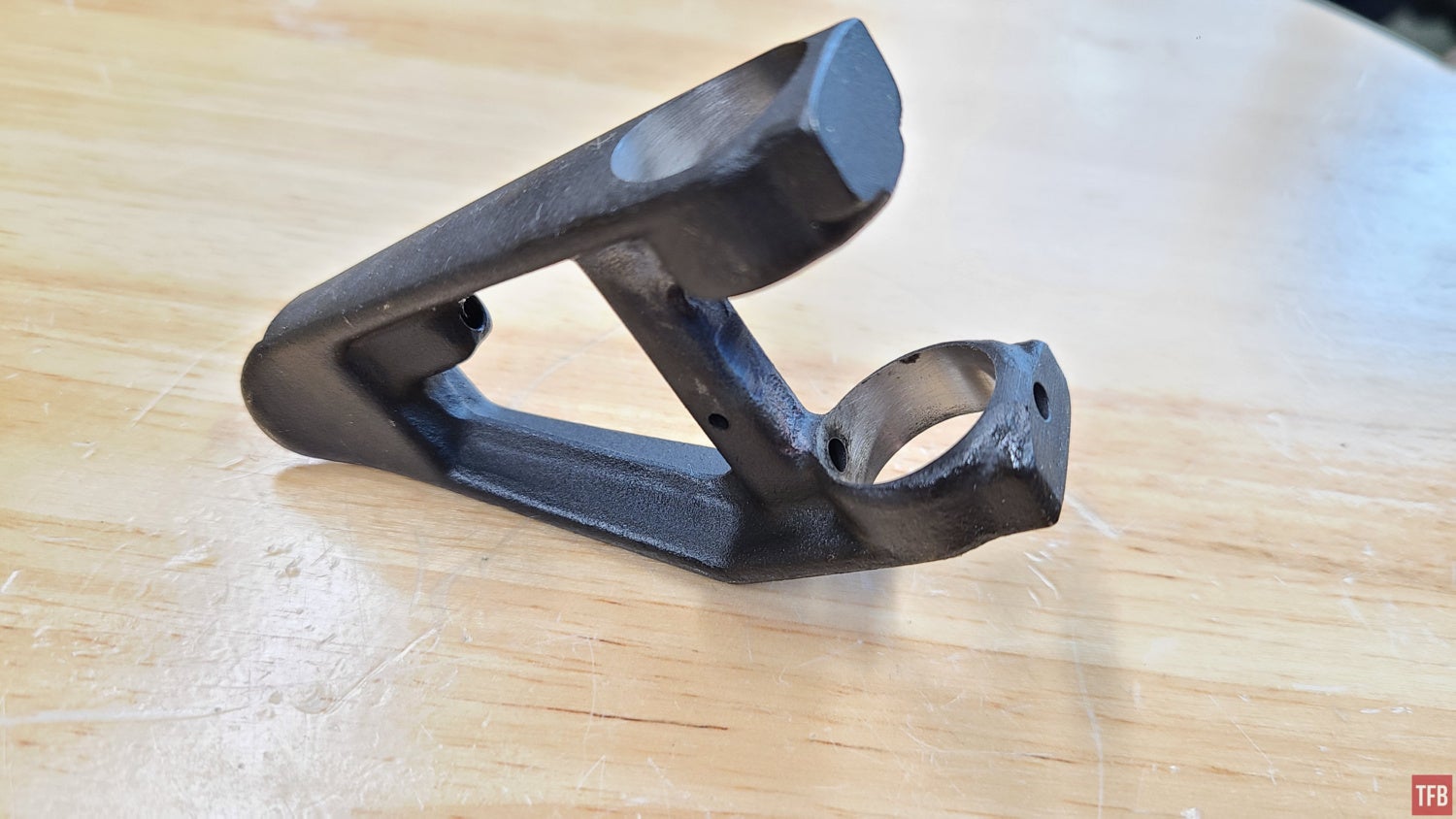
The only hole in the barrel ring is from drilling the gas port hole and did not help affix the FSB to the barrel.
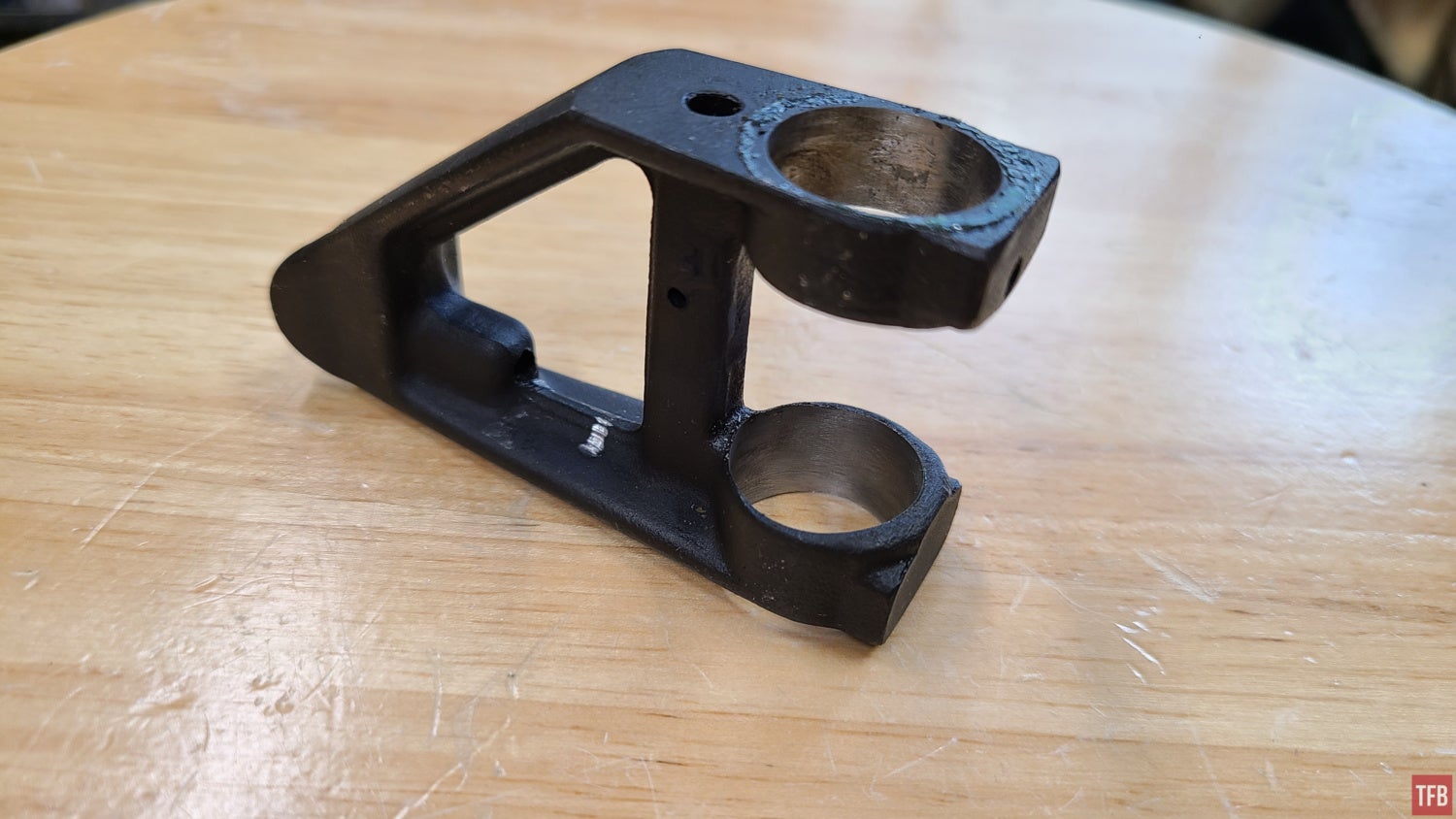
This is an Assault Weapon Ban-era upper, and there is no bayonet lug.
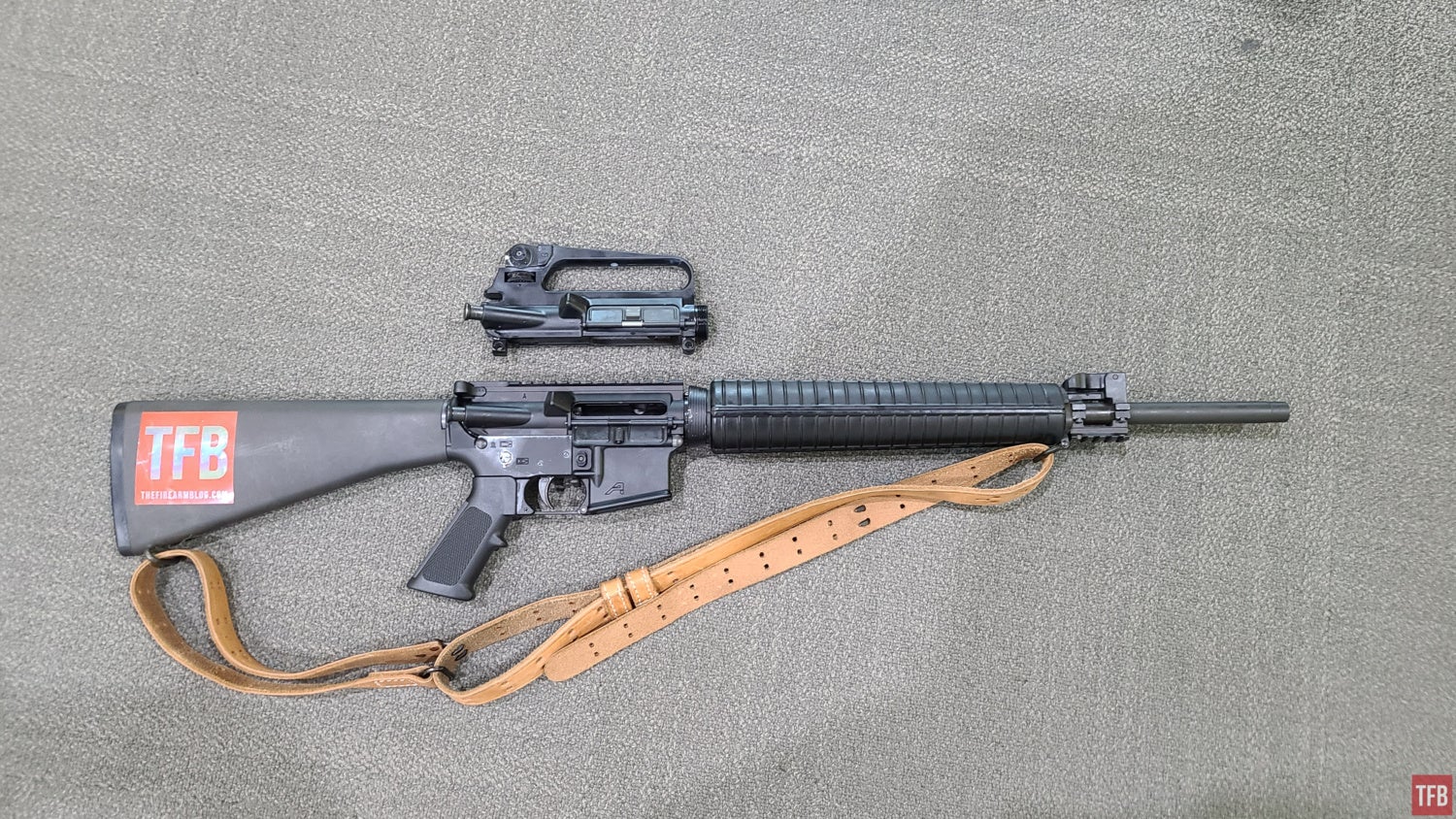
Now I have an extra A2 upper, which I already have plans for.
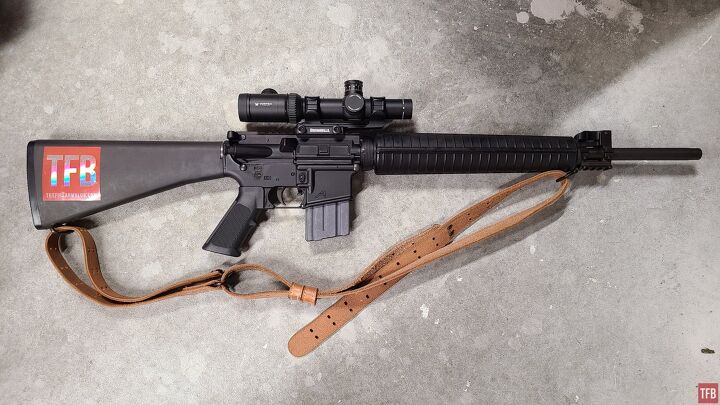
My match rifle at the end of the process, now equipped with a scope and folding front sight base.
Conclusion
Your odds of ever finding a front sight like this are very low. But, should you ever find yourself disassembling an old Bushmaster competition upper, you now know that heat is the key. Thanks for joining me on this journey into the weird world of esoteric AR-15 builds.
 Your Privacy Choices
Your Privacy Choices
